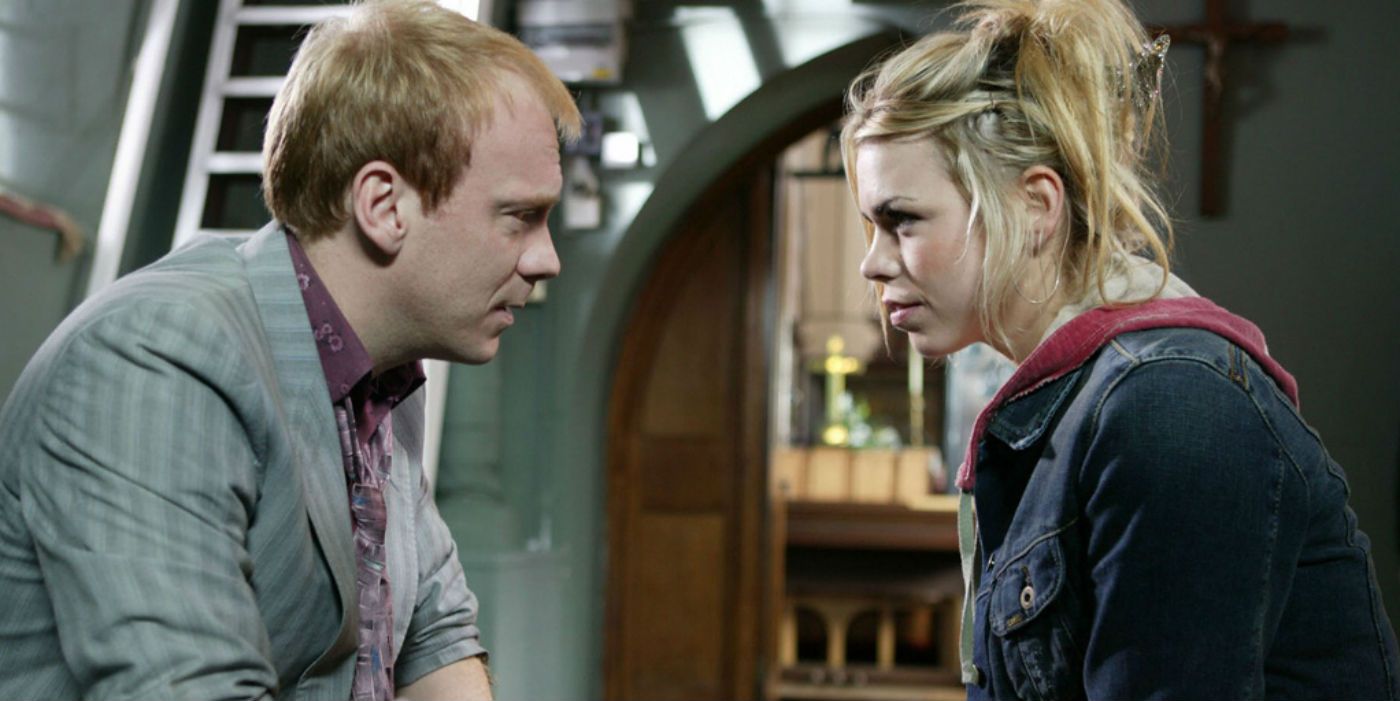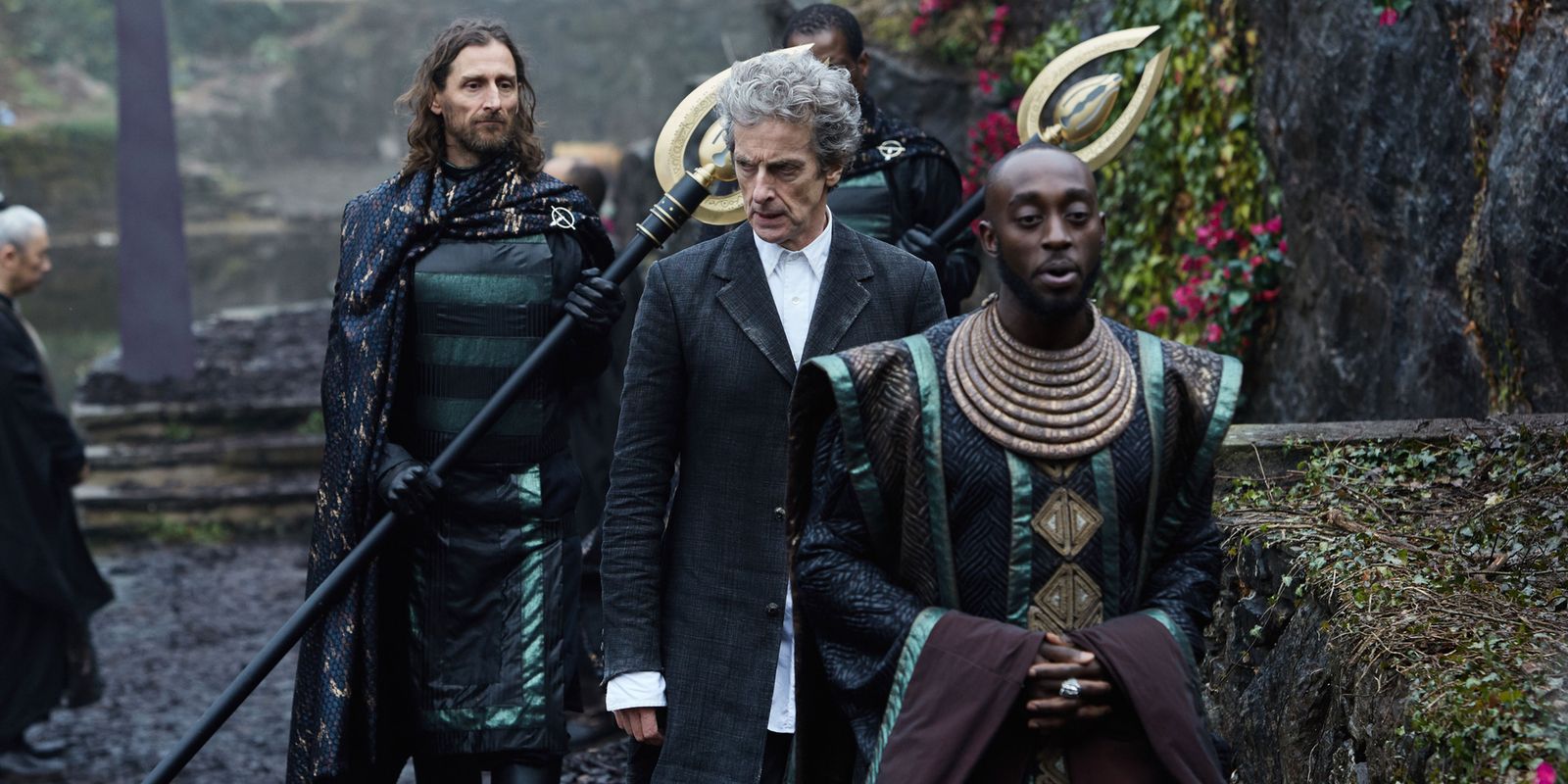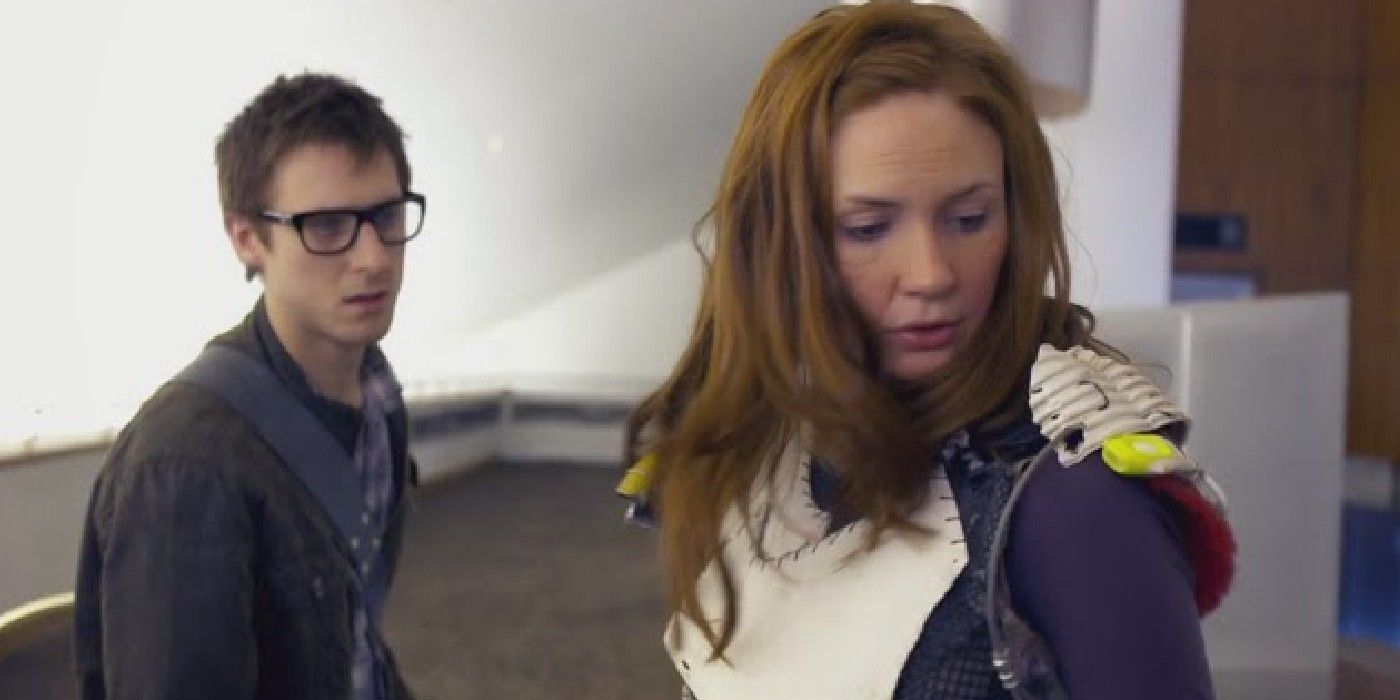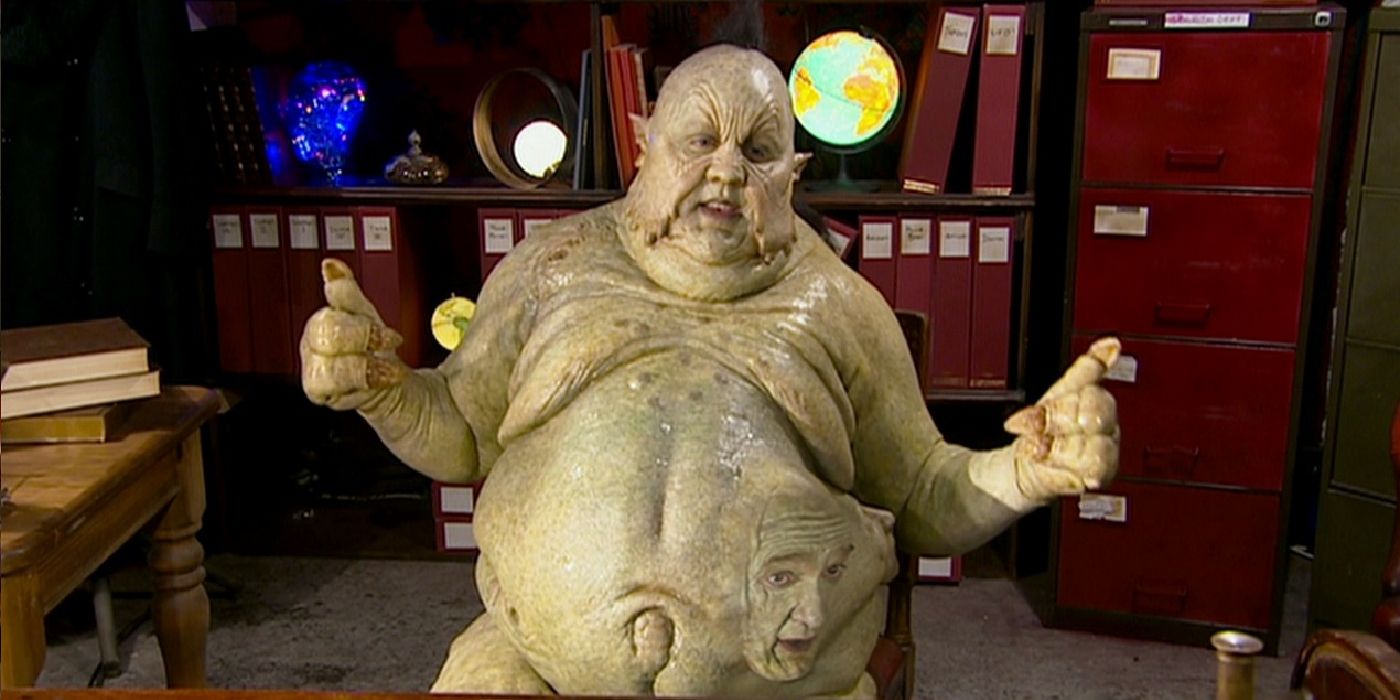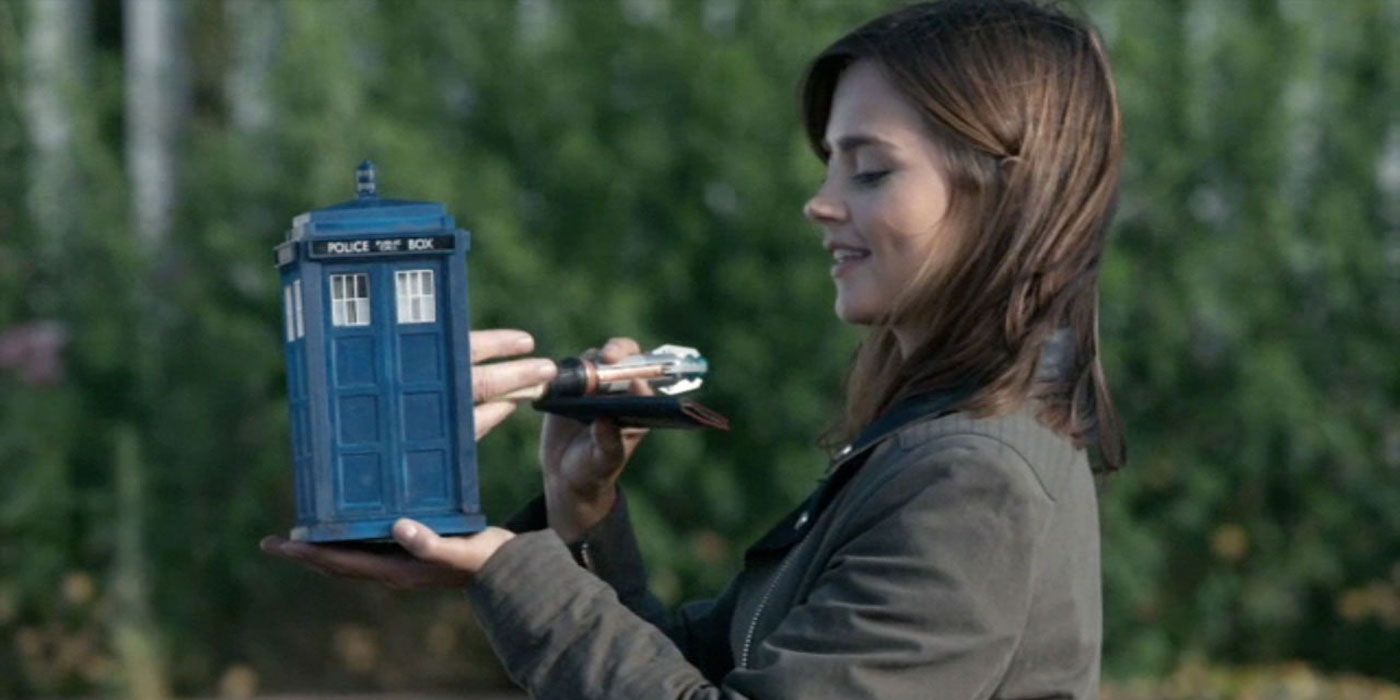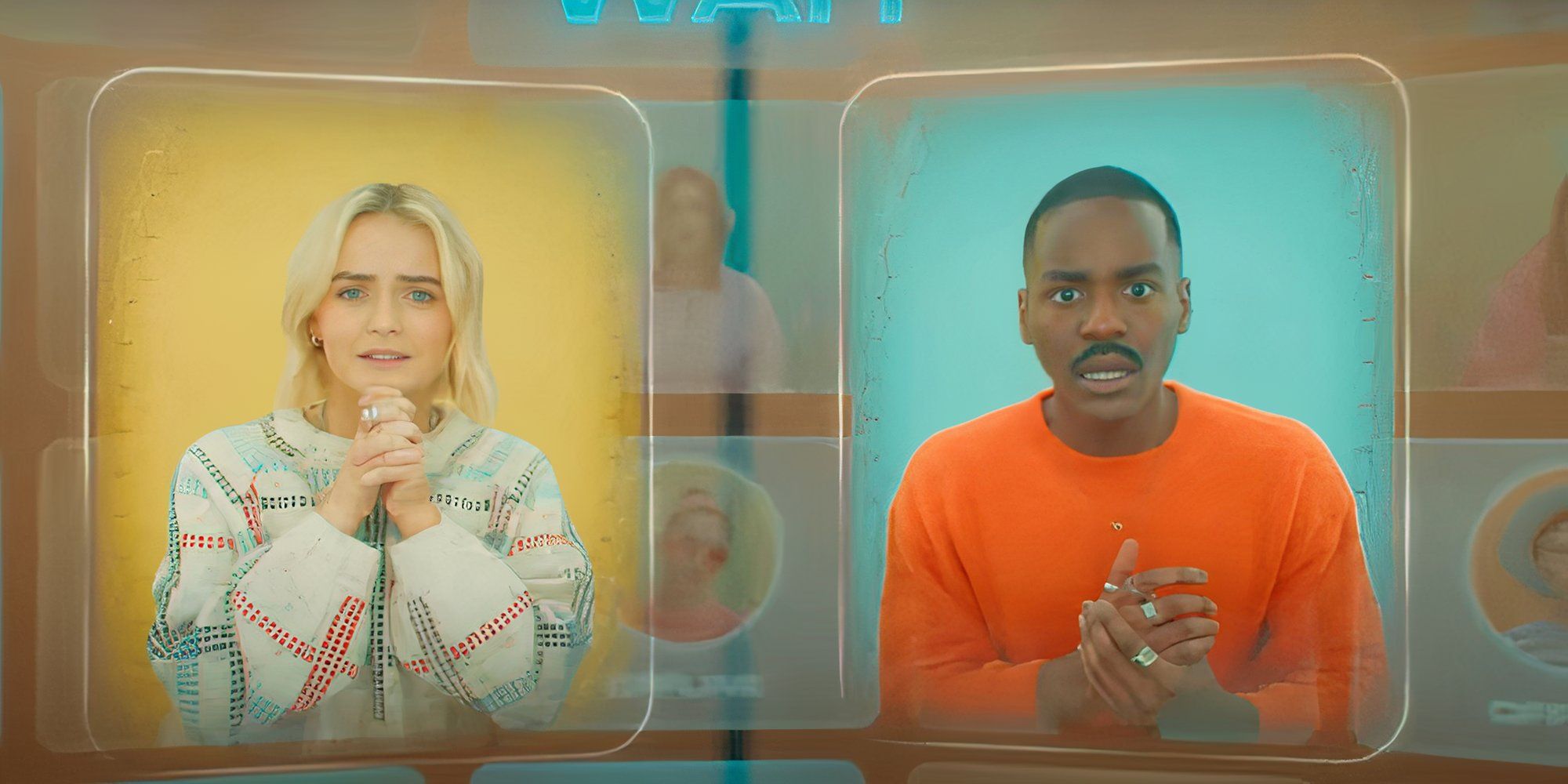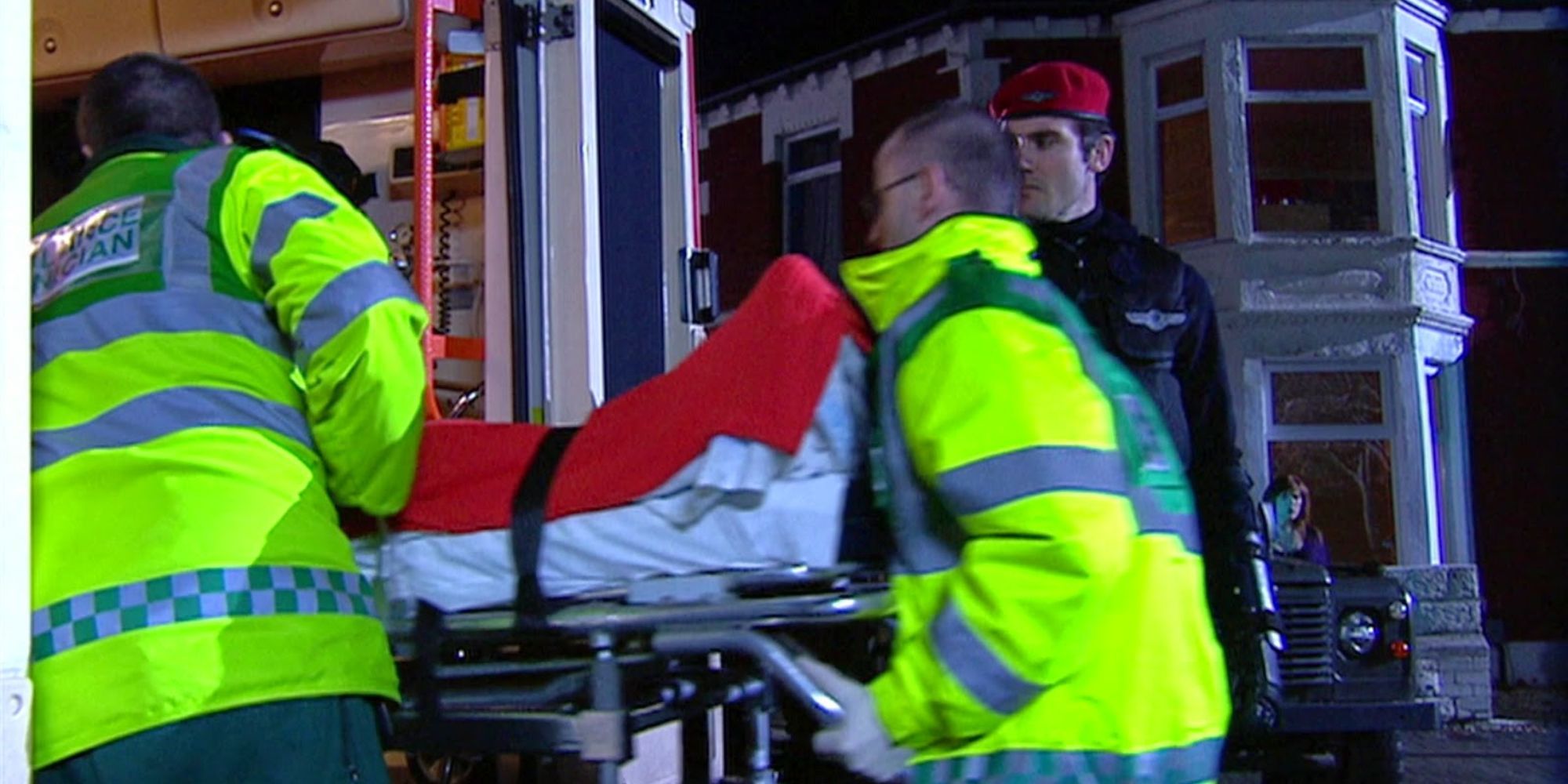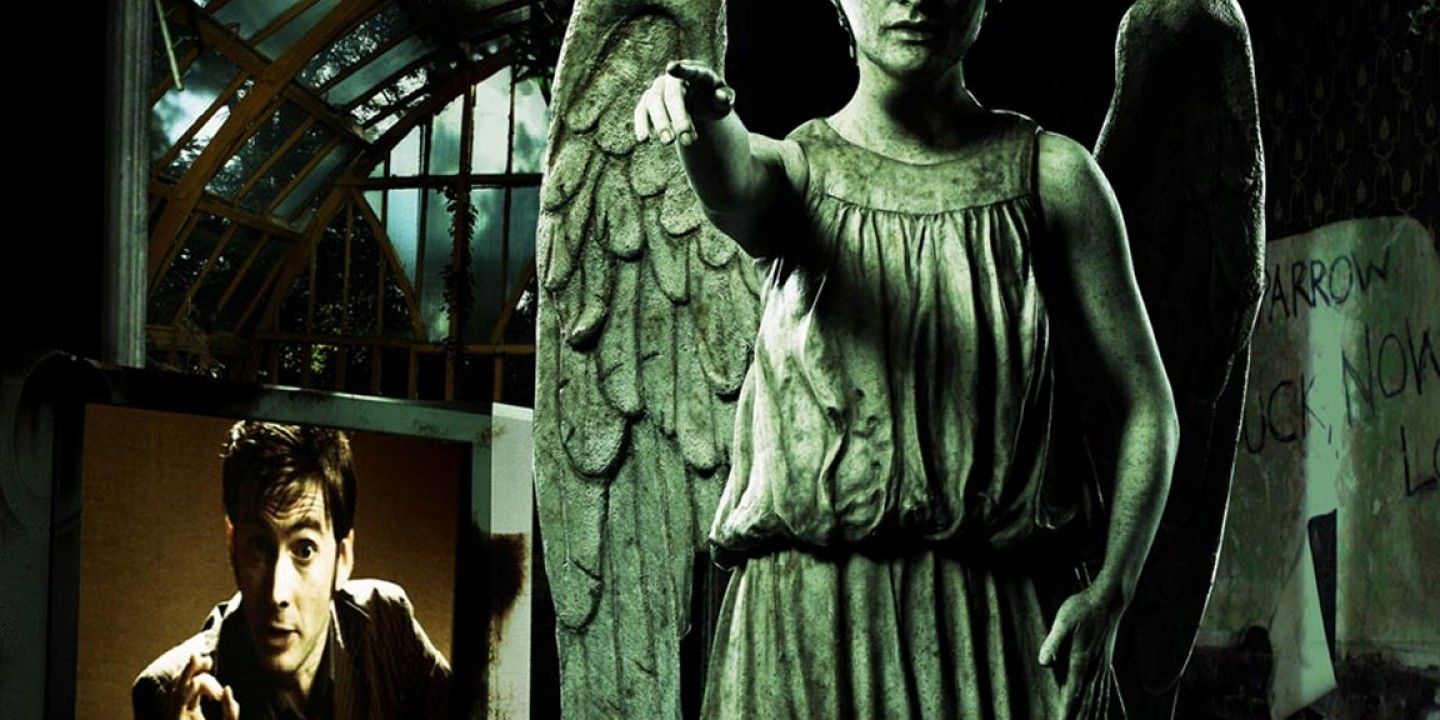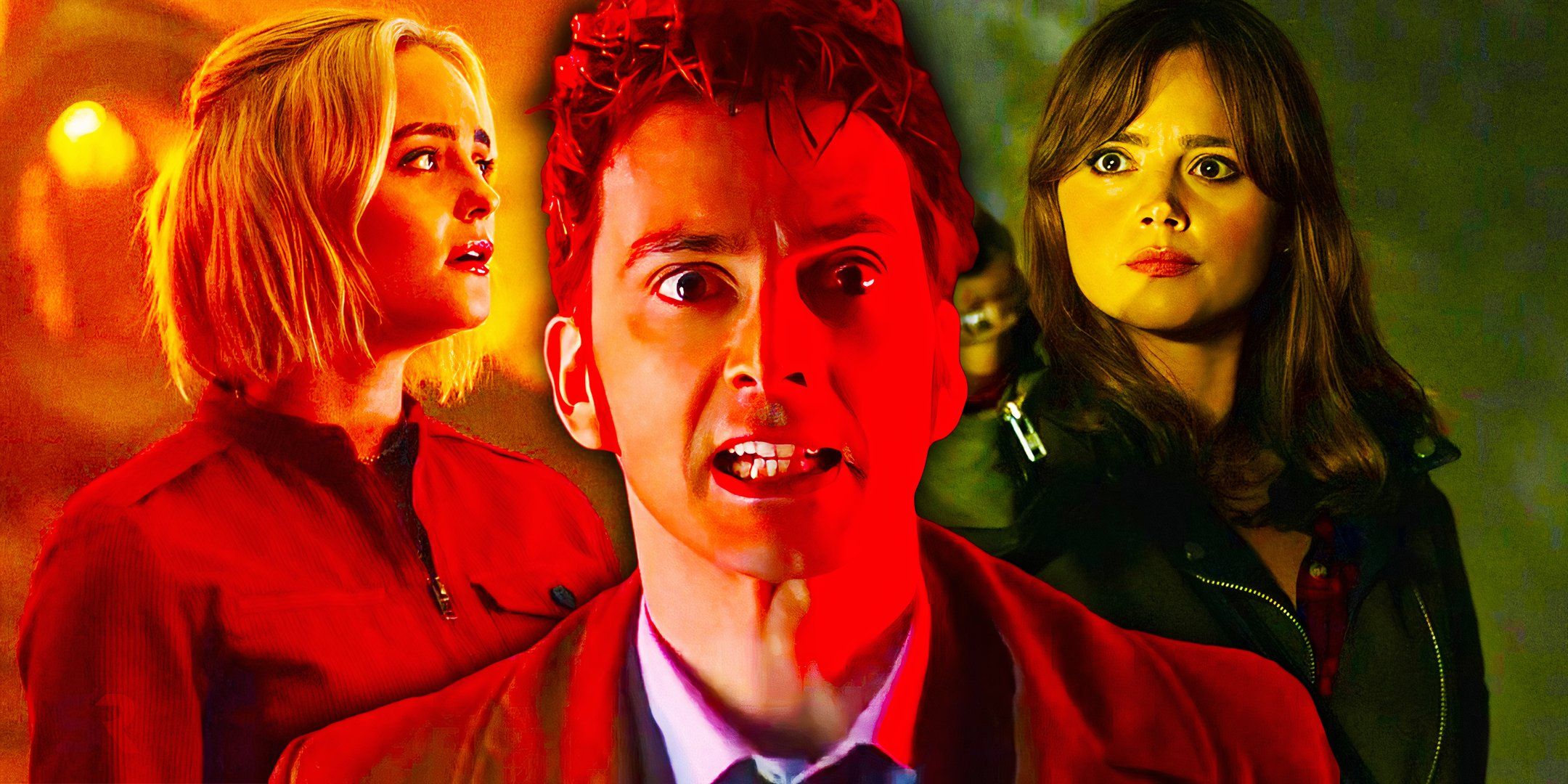
SUMMARY
- Doctor-Lite episodes in modern Doctor Who feature companions taking the lead with minimal Doctor presence, each with varying storylines and characters.
- Some of the greatest Doctor Who stories come from Doctor-Lite episodes, showcasing the impact companions can have in saving the universe.
- Despite the absence of the Doctor in some episodes, the narrative still progresses with the companions leading the way, showing their strength and bravery.
Doctor Who‘s modern era includes some Doctor-Lite episodes, stories in which the Doctor is primarily absent on screen, and some are better than others. Classic-era Doctor Who doesn’t generally contain episodes or serials where the Doctor is notably missing, but since the show’s 2005 reboot, there are now several. The most recent Doctor-Lite episode, “73 Yards,” contains quite a few members of the Doctor Who season 14 cast, except Ncuti Gatwa’s Fifteenth Doctor.
Doctor-Lite episodes all lack the Time Lord but vary in terms of storyline and characters. Some Doctor-Lite episodes are led by a companion, whereas others introduce a new face with little or no prior connection to them. Occasionally, like in “73 Yards,” Doctor Who’s UNIT makes an appearance, too. Although an episode without the iconic Time Lord seems unusual, some of the greatest Doctor Who stories of all time are Doctor-Lite episodes.
9 Near Doctor-Lite Episode – Father’s Day
Season 1, Episode 8
There are multiple episodes in Doctor Who’s modern era that are close to being Doctor-Lite episodes but, realistically, aren’t. The season 1 episode “Father’s Day” is considered one by Ninth Doctor actor Christopher Eccleston at the FanExpo in Boston, for example. The story of “Father’s Day” is motivated by Rose’s need to see her dad on the day of his death, and she gets caught up in the emotion of the situation.
In the latter half of the episode, the Doctor is snatched by a Reaper, a creature that forms because of Rose’s paradox. Despite the Doctor’s absence, he is still very present in the episode. The Time Lord teaches Rose the dangers of changing history, but she persists anyway.
8 Near Doctor-Lite Episode – Extremis
Season 10, Episode 6
The season 10 episode “Extremis” is another episode that is close to being Doctor-Lite but isn’t. The story is told across two different narratives, one real and one virtual. However, the Doctor’s simulation is still the Time Lord.
The virtually simulated Doctor shares the same memories as his counterpart and, as a perfect duplicate, believes himself to be real. Even though he holds the same personality as the Doctor, it’s not his real body. Therefore, “Extremis” isn’t quite a Doctor-Lite episode, as the Doctor’s mind is always present.
7 Near Doctor-Lite Episode – The Girl Who Waited
Season 6, Episode 10
Season 6’s “The Girl Who Waited” has less of the Eleventh Doctor than other episodes. The storyline primarily focuses on Amy and her feelings about her relationship with Rory, with her finally understanding what the 2000 years he spends waiting for her feels like. However, the Doctor is still a crucial factor in the narrative pushing forward.
Without the Doctor, Rory is unlikely to get very far into the Apalapucian institution and save his wife, whose timeline is speeding along much quicker than theirs. A majority of the runtime is dedicated to Amy growing old by herself, but Rory and the Doctor are always close behind. Despite “The Girl Who Waited” having less Doctor in it than other episodes, he is too present for it to be considered a Doctor-Lite episode.
6 Love & Monsters
Season 2, Episode 10
The season 2 episode “Love & Monsters” is one of the most renowned episodes of Doctor Who. The episode focuses on Jackie Tyler more than anyone else but also introduces one-time protagonist Elton, a member of LINDA. While it is generally considered one of the show’s worst episodes, “Love & Monsters” does have some positive qualities. For example, the mix of some of Murray Gold’s best songs and popular tracks from the likes of ELO is particularly strong.
Unfortunately, “Love & Monsters” fails to recreate the same warmth the rest of the season possesses. The sudden jump into a mockumentary format feels off, and there isn’t much of a narrative to follow. The only interesting part of the story is Elton and his past interaction with the Tenth Doctor as a child, which is only resolved in the last few minutes of the episode.
Peter Kay’s Victor Kennedy also lacks the same humor the hit British comedian is known for, and the character doesn’t present the same level of threat as a typical Doctor Who villain. Kennedy’s transformation into the Abzorbaloff is something the episode frequently faces criticism for. The creature’s design is the result of a Blue Peter competition, and while it is an interesting concept, the execution is simply ridiculous and holds no real fear.
5 Flatline
Season 8, Episode 9
The season 8 episode “Flatline” does include the Twelfth Doctor, but because he is unable to escape his shrunken TARDIS, Clara is forced to take on his role in the universe. While some do not consider “Flatline” to be a Doctor-Lite episode, it technically is. The Doctor’s presence is minimal, and his companion is the one to push the narrative forward. Throughout the episode, Clara attempts to solve a mystery involving missing people and strange local murals, all while the Doctor converses with her through an earpiece.
This leads to some hilarious interactions between the two, with Clara introducing herself as “the Doctor” and mocking his alien behavior while still trying to save the day. While the Doctor does try to help where he can, Clara makes most of the creative solutions, and she is the one who truly does the heavy work. For example, in the climax of the episode, Clara comes up with a plan to reroute energy to the TARDIS so that the Doctor can escape.
Overall, “Flatline” is an enjoyable episode, but sadly, it is not as Doctor-Lite as other adventures in the category. The Doctor’s advice throughout is helpful to her, but Clara is just essentially using her experience traveling with the Time Lord to the best of her ability. Clara isn’t a new, wide-eyed protagonist thrown into a scary and unrecognizable world, which is an important element in a Doctor-Lite episode, albeit not essential.
4 Dot And Bubble
Season 14, Episode 6
The season 14 episode “Dot and Bubble” can be considered both a Doctor-Lite and Companion-Lite episode of Doctor Who. The episode follows a fascinating world that is similar to that of a Black Mirror story, with the Doctor and Ruby chiming in through the mysterious “dot” to speak with Lindy and her friends. Lindy’s journey as she escapes underneath the city is tense, at least until she crosses paths with pop star Ricky September.
Unlike other episodes like these, one core difference is that Lindy is an unlikeable character. Previous one-time lead characters in Doctor-Lite episodes are often brave and throw themselves into the Doctor’s dangerous world. However, Lindy isn’t as enthusiastic but eventually trusts the Doctor and Ruby. Sadly, she’s quite rude to the pair when she finally meets them in person and lies about sacrificing Ricky to her “dot” to save her own life.
Although the Doctor and Ruby don’t appear physically on screen until the end of the episode, their role in Lindy’s survival through her “dot” is essential. However, she turns them down when the Doctor offers to take her somewhere safer, resulting in a heartbreaking moment for the Time Lord, who breaks down at her decision. Unfortunately, “Dot and Bubble” lacks much of a conclusion, as Lindy’s fate as she sails away with her friends is left uncertain.
3 Turn Left
Season 4, Episode 11
The season 4 episode “Turn Left” is an ideal example of a Doctor-Lite episode, as the story is driven by a companion with zero influence from the Doctor. In “Turn Left,” the universe changes completely when Donna is manipulated by a fortune teller, making the human woman change the course of history by driving in the wrong direction. This small difference in travel plans triggers a chain of events that impacts several storylines throughout seasons 3 and 4.
Because Donna doesn’t save the Doctor in “The Runaway Bride,” he dies underneath the Thames, and the whole universe suffers for it. The unaware Donna loses friends of the Doctor’s whom she never got to meet and causes deaths that never originally happened. As the Doctor is gone, Martha dies on the Moon, along with Sarah Jane, who isn’t a part of the episode “Smith and Jones.” While heartbreaking, this episode amazingly highlights the impact of the Doctor’s allies after leaving the TARDIS.
“Turn Left” famously includes the official return of Rose Tyler, who fills the role of the Doctor in a unique way that is still very much her character. Rose never hesitates to admit that she doesn’t know what she is doing, but all of her choices are made based on the Doctor’s thinking. This episode is the perfect example to argue that companions can easily save the universe without the Time Lord. Although a lot of Donna’s actions are because of Rose, she also leads with her gut instinct.
2 73 Yards
Season 14, Episode 4
The Doctor Who season 14 episode “73 Yards” initially starts with the Doctor, but he magically disappears before the two-minute runtime. While there are plenty of episodes where the companion has to take the reins, it has never happened to one so early in their travels aboard the TARDIS, especially with zero Doctor at all. The enigmatic tale of Mad Jack and him becoming Prime Minister uses certain elements of an up-to-date retelling of Martha Jones’ season 3 finale storyline from her point of view. However, Ruby doesn’t have much of a plan until the second half of the episode.
“73 Yards” is a story about Ruby Sunday in one lifetime and how the “butterfly effect” can change a person’s timeline in an instant. With the Doctor gone, Ruby is followed by a mysterious woman who scares off everyone who approaches her. Ruby’s journey throughout the episode relies not so much on her companion skills but her patience and resilience. However, unlike most Doctor Who stories, this episode doesn’t get much of a logical conclusion because of its focus on the supernatural.
Ruby Sunday’s timeline in “73 Yards” brings her to stop Mad Jack and grow old. In her last moments, Ruby stops her former self from the beginning of the episode from making the step that causes the whole timeline. While very little is known about this episode’s villain, it proves that Doctor Who’s characters are interesting enough by themselves to push a narrative like this. Unlike other Doctor-Lite episodes, Ruby doesn’t become the Doctor and is just her, and that’s enough to keep it interesting. “73 Yards” is Doctor-Lite, if not Doctor-None, but it is definitely a Ruby episode.
1 Blink
Season 3, Episode 10
The season 3 episode “Blink” perfectly encapsulates what a Doctor-Lite and Companion-Lite episode is, and it also marks the beginning of the term. In an interview for Doctor Who Magazine, Steven Moffat refers to “Blink” as a “cheap, no CGI, Doctor-lite episode.” While such episodes are featured in previous seasons of Doctor Who, this is the first instance that somebody put the concept into words. “Blink” sees the incredible Carey Mulligan as Sally Sparrow, the main character for one of Steven Moffat’s best Doctor Who episodes, and her troubles communicating with the Doctor and Martha.
“Blink” is also the first appearance of the iconic Doctor Who villains: the Weeping Angels. The Weeping Angels go on to be one of the most terrifying monsters of the show because of their simple design and ruthless killing methods. By sending their victims back in time and forcing them to live out their days outside of their original timeline, the Angels manage to be cruel and ostracizing at the same time. Considering that a lot of Doctor-Lite episodes don’t include such a massive threat, it is impressive that Sally finds a way to contact the Doctor in the 1960s.
However, the communication between the pair across two time periods is one of the most impressive things about the episode. Moffat is often praised for how intelligent this storyline is and for the overall characterization of Sally. Sally is scared but brave and doesn’t hesitate to throw herself into helping the Doctor, especially as she is seeking answers about her own loved ones. Sally is a one-time lead that Doctor Who audiences are desperate to see return to the show, especially because “Blink” sets her up to be an ideal companion or even a possible personality for a future Doctor.
